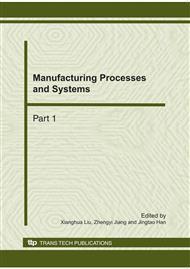p.539
p.544
p.548
p.553
p.558
p.563
p.569
p.575
p.579
The Analysis of Scenario Characteristics in Life Cycle Assessment
Abstract:
Aimed at few reflections on the scenario characteristics in the most methods of LCA, this paper presents a new approach taking specific information of scenario into account in the environmental impact of product. By analyzing the relation between scenario and environmental impact, the attributes of space, time and person are extracted as the most basic characteristics. In order to avoid the deficient of science modeling between the scenario attributes and the environmental impact processes and to use conveniently, the concept of scenario characteristic coefficient is proposed and the three types of coefficients are expressed in detail applying the existing data or statistic. The method of LCIA considering scenario characteristics is presented by integrating the characteristic coefficients into the LCI processes. And this method is applied to study the scenario characteristics of an LCA of electromotor.
Info:
Periodical:
Pages:
558-562
Citation:
Online since:
October 2010
Authors:
Price:
Сopyright:
© 2011 Trans Tech Publications Ltd. All Rights Reserved
Share:
Citation:


